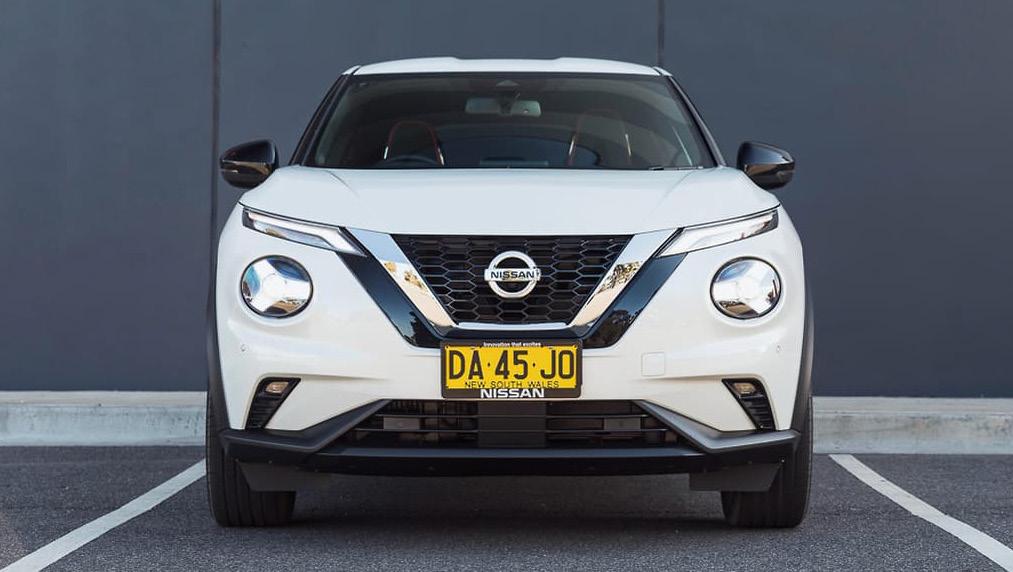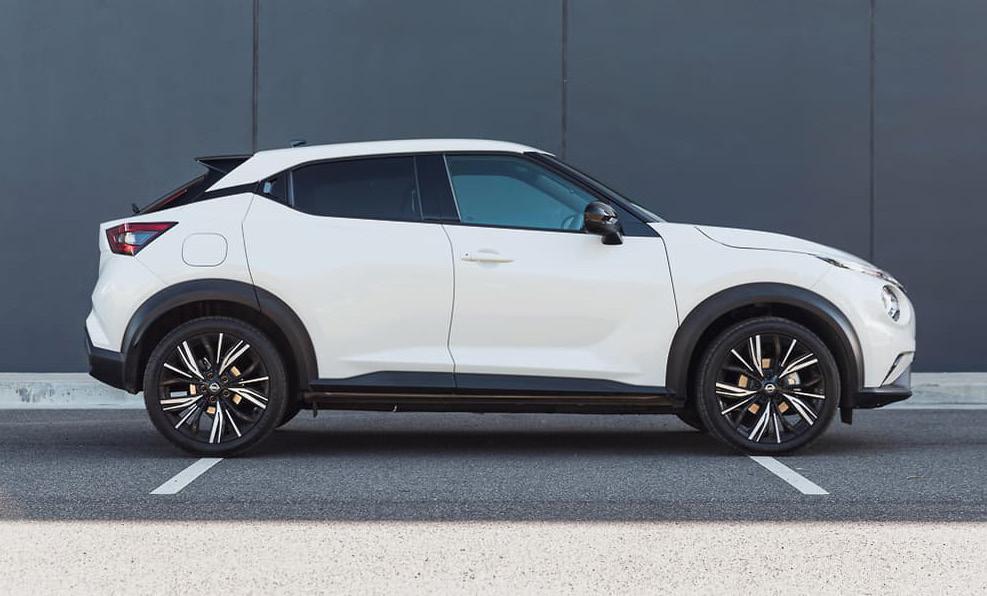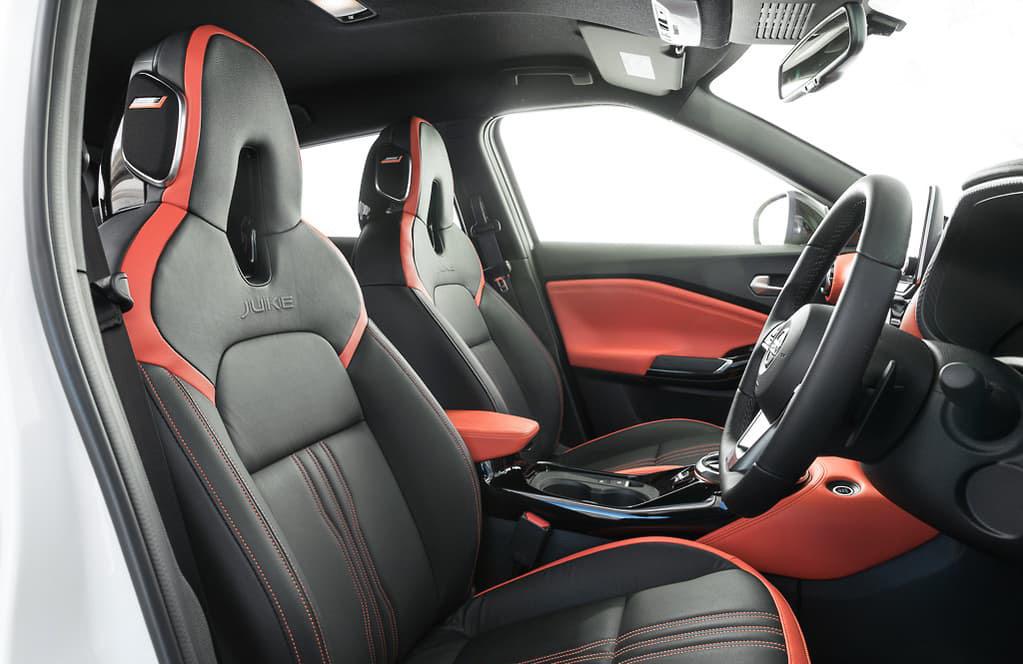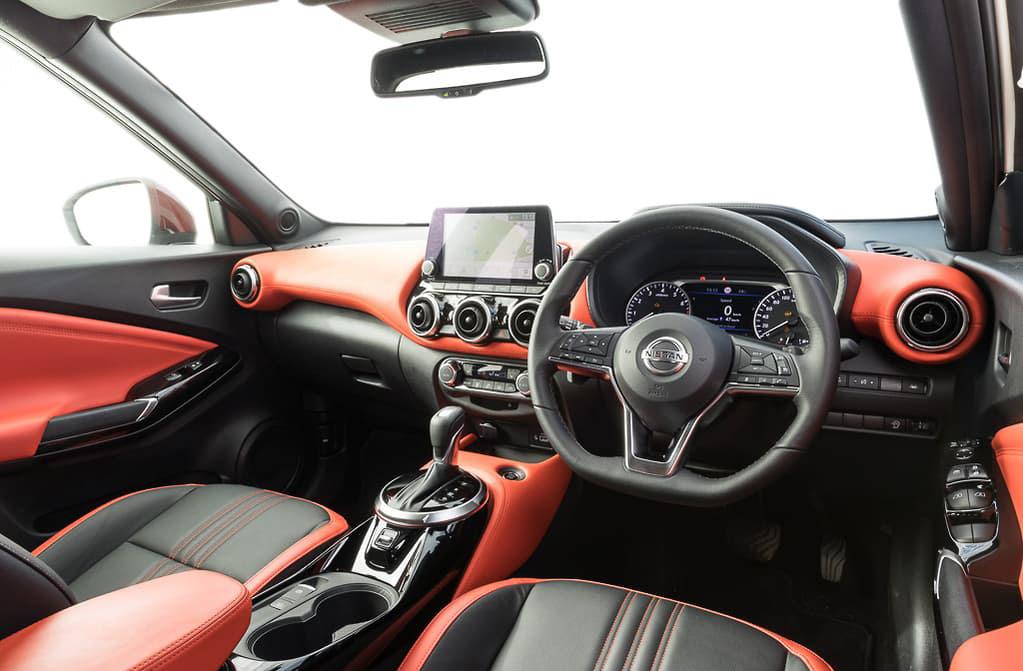
7 minute read
JUKE
3 AUG 2021 | carsales.com.au NISSAN JUKE TI 2021 REVIEW
NISSAN IS HOPING TO ENERGISE ITS MILDER SECOND-GEN JUKE CROSSOVER WITH A HEAD-TURNING NEW TI ENERGY ORANGE VARIANT.
Advertisement
TIM BRITTEN
WHAT IS THE 2021 NISSAN JUKE TI ALL ABOUT?
The Nissan JUKE light SUV became less quirky and more pragmatic when the second-generation model was launched in mid-2020.
The first generation of the oncequirky JUKE appeared in 2014 with a choice of front-drive or AWD drivelines, normally-aspirated or turbo 1.6-litre engines and manual or CVT transmissions. In 2015, a 1.2-litre turbo was slotted into the mix and, in 2018, the JUKE reached its peak with the quasihotshot 1.6-litre NISMO RS good for 160kW/280Nm.
Not so exciting today, the British-built 2021 Nissan JUKE is now a single-driveline light SUV that follows developing trends via a tiny 84kW/180Nm 1.0-litre three-cylinder turbo engine – co-developed with Renault – that hooks up with a seven-seed dual-clutch auto gearbox and front-wheel drive to combine high efficiency with low fuel consumption and minimal CO2 outputs.
Importantly, Nissan’s second go at the JUKE, while no longer so visually challenging, is extended in all directions to become generally more accommodating and, thanks in part to the new CMF-B platform that was also co-developed with Renault, without putting on any weight.
The second-generation JUKE range began with four variants – ST, ST+, ST-L and Ti – but this year has added an ST-L+ model and, as reviewed here, improved the personalisation options on the flagship Ti model grade with a new Energy Orange package.

HOW MUCH DOES THE 2021 NISSAN JUKE TI COST?
The 2021 Nissan JUKE Ti is priced at $36,490 plus on-road costs, with the
Energy Orange trim level brought in as a no-cost option.
Designed to energise sales and interest in the more conservative second-generation JUKE, Energy Orange brings a multi-hued interior with blatant orange splashes of leather trim on the seats, dash, console knee pads and doors.
The effect, clearly aimed at younger buyers, is suitably eye-popping.
And maybe ear-popping too, what with the eight-speaker Bose Personal Plus audio system which incorporates ‘UltraNearfield’ speakers in the driver and front passenger head restraints for a listening experience that’s up close and personal.
There’s no holding back with the wheels either. The 19-inch Akari alloys are the same as used on the Ti and add an unmistakable purposefulness to the JUKE.
Adaptive cruise control, sat-nav, three driving modes (Eco, Standard and Sport), bird’s eye view cameras and an auto-dimming rear-view mirror are all fitted.
These add to a well-stacked safety suite found across the range that includes autonomous emergency braking (AEB) with pedestrian and cyclist detection, rear cross traffic alert, lane departure warning, lane keep assist, blind spot warning, traffic sign recognition and an active speed limiter.
The Energy Orange Ti JUKE sits comfortably with non-AWD premium-spec rivals such as the Mazda CX-3 Akari LE (from $36,690), Toyota Yaris Cross Urban (from $34,990) and Volkswagen T-Cross 85TSI Style (from $31,390) – and the
WHAT WE LIKE
Bigger and more useable than before Fuel efficiency Bright and inviting no-cost Energy Orange interior option at the top-spec Ti grade
NOT SO MUCH
Slightly tardy off the mark Lacks character of original JUKE No rear air vents and no centre arm rest in the back seat $35,165 Toyota C-HR Koba, which actually measures less in every dimension than the JUKE but is categorised as a small SUV.
WHY SHOULD/SHOULDN’T I BUY THE 2021 NISSAN JUKE TI?
Although the almost non-existent rear overhang, high-sided window line and hidden C-pillar doorhandles clearly identify it as a JUKE, the latest version of Nissan’s light SUV doesn’t have the cheeky persona of the original.
For some, that’s partly because the 2021 Nissan JUKE is physically larger, which is not really a bad thing, especially without attendant weight penalties.
The tending-to-mainstream feel is probably also due to the absence in the range of a reactive and fun AWD dirt-road flyer such as the NISMO variant, although Nissan has recently teased digital renderings of a rally-ready JUKE tribute to the East African Safariwinning 240Z from 50 years ago.
Rather, the second-generation Nissan JUKE, despite the oversize wheels – used from ST-L upward – conveys a more comfort-oriented persona.
The new platform adds to structural rigidity while reducing noise levels. The steering is quicker and the MacPherson strut front/torsion beam rear suspension is more absorbent – all combining with a subtle but tangible, less shrink-wrapped feel that simply accentuates the fact it’s really a bigger car.
The turning circle, up by 0.3m to 11m, makes it a bit less handy in tight situations.
The minuscule three-cylinder turbo is plucky, characterful and



PRICE
$36,490 (plus on-road costs)
AVAILABLE
Now
ENGINE
1.0-litre three-cylinder turbo-petrol
OUTPUT
84kW/180Nm
TRANSMISSION
Seven-speed dual-clutch automatic
FUEL
5.8L/100km (ADR Combined)
CO2
136g/km (ADR Combined)
SAFETY RATING
Five-star (ANCAP 2019) masterful. Despite its 1.0 litres it maintains a useful supply of torquey driveability.
The dual-clutch seven-speed gearbox has a well-matched set of ratios but suffers a slight reluctance from step-off that seems more to do with accelerator calibration than any intrinsic lack in the transmission itself.
Underway, the JUKE has no qualms about keeping pace in stop-start traffic or on the freeway. The active cruise control works well too, using the brakes to effectively control speed on descents.
The JUKE is specified to run on either 95 RON premium unleaded or a 94 RON E10 ethanol mix, and Nissan quotes a combined average fuel consumption of 5.8L/100km. This tends to make it a tad thirstier than most competitors other than front-drive versions of the Mazda CX-3.
That said, our on-test figure of 7.3L/100km was acceptable given the mix of driving conditions we experienced.
WHO WILL THE 2021 NISSAN JUKE TI APPEAL TO?
Sure to be appreciated by a younger target audience as well as older-generation buyers who it’s also trying to please (to a certain extent), the bigger dimensions of the second-generation Nissan JUKE means there’s more breathing room in the cabin.
Added to the subtle sense of extra space in the cosy front seats, there’s acceptable rear seat knee-room (up by 5.8cm) – although it does depend on the size of individual passengers – and an overall improvement in shoulder-room which results in a less-cramped feel.
Even at this level though, the 2021 Nissan JUKE Ti doesn’t fit into genre expectations, with no sign of rear seat air vents or a folding centre arm rest.
The JUKE Ti Energy Orange model’s funky orange/black dash places all its controls logically, with a touch of retro in the circular air vents – three at dash centre, two outliers on the left and right – a high-set 8.0-inch centre screen, lessthan-tactile buttons on the spokes of the flat-bottom steering wheel, and shift paddles complementing a conventional shifter on the centre console (complete with a Normal/ Sport/Eco mode selector switch).
A set of quite compact cubbies and bottle holders contributes to a combination of busyness and cosiness.
The JUKE’s narrow, high-set side window line and heavily stylised C-pillars don’t provide the best rearward vision but that’s not uncommon in the light SUV segment where conservatism is not always welcome.
The boot, at 422 litres’ capacity before expanding to a maximum 1305L with all seats folded, is comfortably more useable than the bulk of its competitors and, unsurprisingly, the spare is a space-saver.
SO, WHAT DO WE THINK OF THE 2021 NISSAN JUKE TI?
Nissan has fronted up with a more refined, more spacious secondgeneration Nissan JUKE.
But with the light SUV segment now bursting with stylistically adventurous offerings, the 2021 Nissan JUKE Ti – even in Energy Orange trim tested here – doesn’t stand out in the same way it did when the model first arrived in Australia in late 2013, three years after being unveiled at the 2010 Geneva motor show.
The tight, chunky looks have been reimagined so that, while the JUKE remains cleanly identifiable, it represents something other than an in-your-face style statement.
And though it’s dynamically more refined, it lacks the compact chuckability of the first-generation variants – particularly those with AWD.
The latest JUKE aligns itself with a more conservative, more universal buyer group. It is more a pragmatic choice than a radical one.
The negative side to that is Nissan’s little crossover is today relegated to simply being part of a now well-established cadre of light SUVs. No matter how improved over the original, its looks are far from unique.
There are competitors out there which arguably have more to offer in terms of driver appeal, general functionality and, maybe, kerbside styling impact.
The Nissan JUKE remains an appealing light SUV, but it no longer has the visual cut-through that made it such a standout in 2013. N












